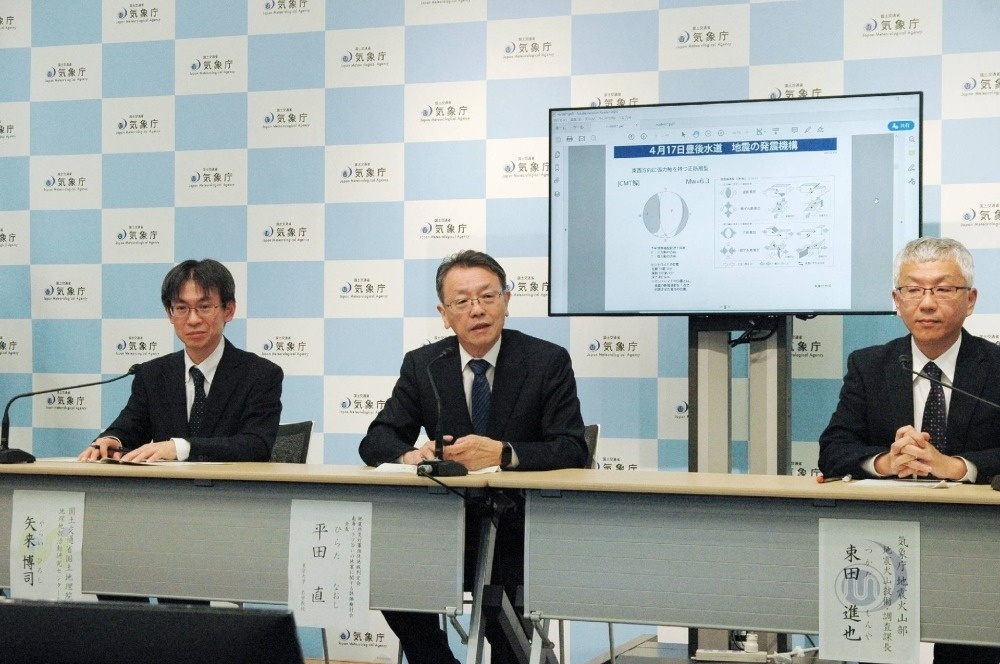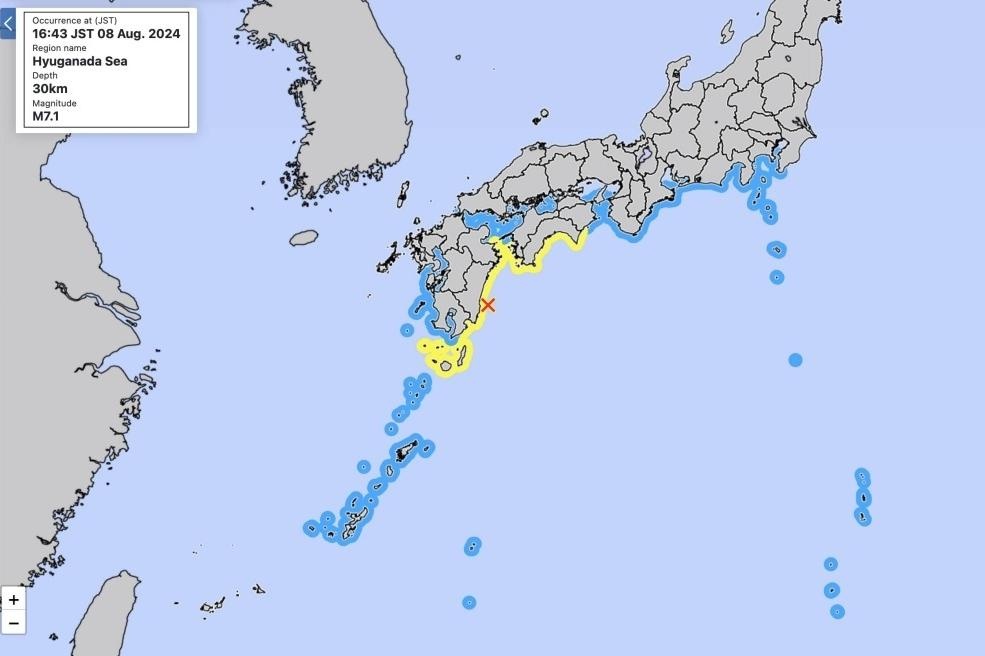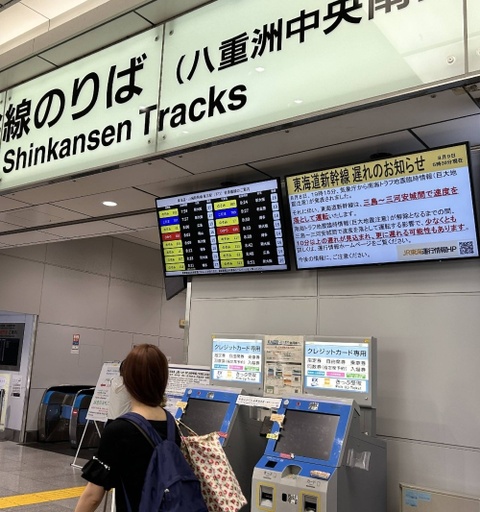Japan has warned of the risk of a superquake at the Nankai Trench, after a 7.1 magnitude earthquake on August 8.
On August 8, Japanese media reported that the country’s Meteorological Agency had decided to issue a warning, calling on people to increase preparations in case a super earthquake strikes.
So far, the impact of August 8’s earthquake has been minor, with 16 injuries and three damaged buildings reported in the affected areas.
But the subsequent warning may make people worried. According to Reuters, earthquakes with an intensity greater than 8 degrees are considered super earthquakes. Japan estimates the next major earthquake in the Nankai Trench could be as strong as 9.1 magnitude.
Warning
At 7:15 p.m. on August 8, more than two hours after the earthquake occurred off the coast of Miyazaki Prefecture, the Japan Meteorological Agency issued a major earthquake warning.
At a later press conference, the agency said the likelihood of a major earthquake along the Nankai Trench was higher than normal, although the warning did not mean a major earthquake would necessarily occur in the near future. a specific time frame.

However, because this is the first time such a warning has been issued, the agency urged people to prepare for potential disasters while avoiding panic.
The agency issues warnings about the possibility of a megaquake when unusual phenomena are observed along the Nankai Trench or when the likelihood of an earthquake is believed to increase.
After an initial warning is issued, a weather agency’s expert committee will meet to assess the situation and update the warning level based on conditions such as the magnitude of the earthquake occurring at the plate boundary tectonic.
Such notices are issued at two levels based on the commission’s assessment – warnings and more severe warnings. The agency issued a lower-level warning on August 8, meaning people should prepare for potential evacuations.
The earthquake on August 8 had an intensity greater than 7 degrees, leading to a lower warning level. An earthquake of magnitude 8 or greater will trigger a higher alert level.
In principle, the warning is expected to last for a week and could be lifted based on expert analysis. But that does not mean that there is no possibility of a major earthquake in the near future.
Earthquake in the Nankai Trench
The Nankai Trench is located off the southwest Pacific coast and extends about 900 km, where the Philippine Sea plate is sinking below the Eurasian plate and accumulating tectonic deformations can cause earthquakes.
Large earthquakes in the Nankai Trench have occurred in the past in cycles of about 100-150 years, historically causing severe damage. The most recent earthquake, on December 21, 1946, measured between 8.1 and 8.4 on the moment magnitude scale.

According to the government’s damage assessment, a major earthquake in the Nankai Trench could cause up to 323,000 deaths and disappearances in the worst-case scenario. The government aims to reduce this number by 80% with full evacuation measures.
Since 78 years have passed since the last major earthquake in this area, according to government data, the probability of an earthquake with a magnitude of 8-9 in the next 30 years is 70-80 %.
Additionally, it is possible that areas hit by earthquakes of magnitude 7 or higher, such as the one that struck Miyazaki on August 8, may experience additional earthquakes of this magnitude. 8 degrees or higher.
In the event of a large-scale earthquake along the Nankai Trench, the time it takes for a tsunami to strike could be very short, leaving people without enough time to evacuate to a safe place.
Plans
Chief Cabinet Secretary Yoshimasa Hayashi said the government is closely monitoring the situation and urged people to continue their daily activities.
“We urge everyone to take preventive measures, check evacuation routes and means of communication with family, and evacuate immediately,” Hayashi said at a regular press conference on August 9. that is, in the event of an earthquake.
He added that the government had detected three cases on social media of using misinformation about earthquakes to direct people to harmful websites, stressing the importance of being cautious in the space. network.

The government has two designations for specific areas requiring enhanced precautions, based on the expected intensity of the earthquake and the expected level of tsunami damage. Such cities and towns are required to establish their own procedures for a possible major earthquake in the Nankai Trench.
Meanwhile, the Wakayama prefectural government, after establishing a specialized task force on the night of August 8, said it will arrange rotating staff 24 hours a day in each department next week to coordinate Respond to any potential earthquakes. The Tokyo government also established a similar task force.
The warning has also received a response from railway operators. On the evening of August 8, Central Japan Railway announced the temporary suspension of some express trains.
Additionally, while the warning is in effect, the Tokaido Shinkansen line, connecting Tokyo and Osaka, will operate at slower speeds between Mishima and Mikawa-Anjo stations, resulting in delays of at least 10 minutes. East Japan Railway has implemented similar measures on some sections of the Tokaido, Ito and Chuo lines.
Avoid panic
According to The Japan Times, to prepare to respond in case of a strong earthquake, people need to prepare:
– Enough water for you and your family, recommended 3 liters/person/day for at least 3 days
– Portable toilets and toilet paper
– A small emergency kit that you can carry with you
– If you have a car, fill the tank with gas
– Some cash available
However, the Japanese government urges people to avoid excessive hoarding of goods. Demand for disaster kits and daily necessities spiked on August 10.
At a supermarket in Tokyo, signs were put up apologizing to customers for shortages of certain products, which they attributed to “earthquake-related media reports”.
The sign said “sales restrictions are in place”, adding that limited quantities of bottled water were being sold due to “unstable” supply.
On the morning of August 10, the website of Japanese e-commerce group Rakuten showed that portable toilets, preserved food and bottled water topped the list of most searched items.
Some retailers along the Pacific coast also reported high demand for similar disaster-related items, according to local media.
Faced with this situation, the Japanese Ministry of Agriculture and Fisheries called on people to “refrain from excessive hoarding of goods”.





